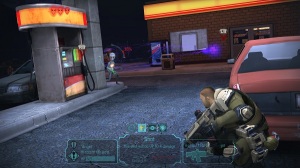Despite my advancing years (vintage ’68), I still enjoy a good computer game. A couple of games that I’ve enjoyed more than I thought I would were the Firaxis titles “Sid Meier’s Pirates” and more recently their re-working of “XCOM: Enemy Unknown”. What both games have in common is the way they break encounters down to their essential elements. They’re the opposite of wildly rambling megaliths such as Skyrim (which I also hugely enjoyed), but they still work exceptionally well.

Duelling with a Spanish captain
In ‘Pirates for example, the action is distilled into a variety of set pieces; sea battles, on-board duels, pub brawls, dances (!) and sneaking through towns. Oh yes, there were treasure hunts too. So how does this relate to GMing? Do we create massive sandboxes with details in every corner, whole worlds?, or do we create cut-scenes? Savage Worlds lends itself very well to the cut-scene approach. Both the avowed ‘pulp’ feel of the game, together with the famous ‘Fast, Furious, Fun’ aim seem to lend themselves to this approach.
In my next session, for example, the players will have to rescue a captured dwarven prince from goblins who are holding him hostage. A number of set pieces immediately come to mind: stealth manoeuvres to take out sentries, chases to run down messengers who would sound the alarm, mini-battles and the like. Of course there is also room for combinations of these elements and more.
The trick will be to avoid railroading the party, or at least to maintain the illusion of choice (isn’t that what we do most of the time if we’re honest?). Freedom to decide is often actually the freedom to make an arbitrary choice: “Do we go left, right or straight-on at the crossroads? ” Without any information to guide the choices, the result is pretty random. In fact, we can even offer a false choice, one where the outcome is the same whichever track they take. But that would be pretty pointless.


Your post brings up two different aspects – mini games and choice.
I think a variety of mini games adds a lot to gaming. Generally RPGs stick to the combat mini game and rely on making it up for the rest. SW has a bit of mini game variety, although some are a little bland (eg mass combat, dramatic tasks)
I try to avoid only the illusion of choice. I think you can have set pieces with real choice – it requires a bit more work, as sometimes scenes need to be removed, altered or created new. If you have a railroad script – the choices can be made more meaningful if there are variant results in the next scene eg one choice gives you less enemies that will be chasing you, another gives you a greater head start, and another gives you an extra companion.
Good to see this blog active again
Thanks for your observations and closing sentiments Planecreek. For all sorts of reasons our gaming tends to be restricted to the colder months, so I don’t tend to blog much in the summer.